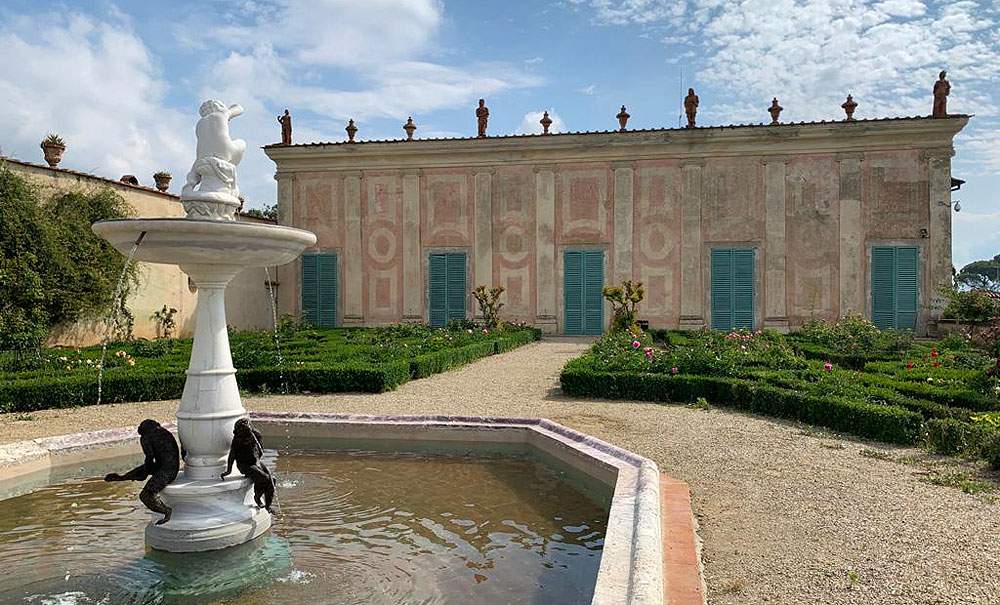Boboli Garden's Monkey Fountain restored: after more than 30 years, it's back in operation
At the highest part of the Boboli Gardens, in the Giardino del Cavaliere, the Monkey Fountain has returned to gush after more than 30 years. Following a year of work, divided into two phases, which restored the functioning of the water supply and drainage system and restored the marble and bronze parts of the octagonal basin, the walls of which were cleaned and waterproofed, as of today the fishing putto and the three little monkeys are once again making water gush From the hands of the putto above the basin and from the mouth of one of the three monkeys, the work of Vicenza sculptor Camillo Mariani (Vicenza, 1567 - Rome, 1611).
The fountain was made around 1830, assembling elements made by various sculptors at different times; the bronze monkeys at the base were made for Francesco Maria II della Rovere, duke of Urbino, whose service Camillo Mariani had entered in 1595, and intended for a fountain at Villa Miralfiore in Pesaro. They were brought from here to Florence to the villa at Poggio Imperiale by Vittoria della Rovere after her marriage to Ferdinando II de’ Medici. In the decorative program of the Pesaro villa, considered by the Duke of Urbino as a place of retreat from public life, the presence of the monkeys is intended to be not so much a reference to vice, unrestraint or the foolish imitation of sounds and gestures, but an exotic wonder and a celebration of the harmonious relationship with nature and its curiosities.
“With the restoration of the Fountain of the Monkeys, after the interventions already carried out to the one in front of the Kaffeehaus, and to the Artichoke Fountain above the courtyard of the Pitti Palace,” commented Uffizi Galleries director Eike Schmidt, “we continue the interventions to the water system in Boboli and gradually recover the voice of the fountains, which are among the fundamental elements of the Garden’s identity.”
 |
| Boboli Garden's Monkey Fountain restored: after more than 30 years, it's back in operation |
Warning: the translation into English of the original Italian article was created using automatic tools. We undertake to review all articles, but we do not guarantee the total absence of inaccuracies in the translation due to the program. You can find the original by clicking on the ITA button. If you find any mistake,please contact us.





























